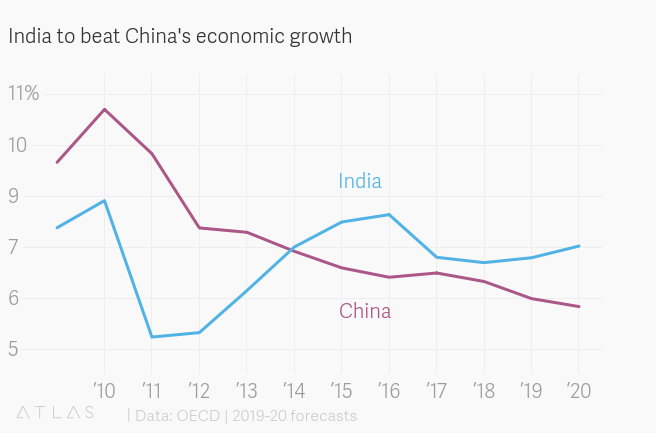~ By Kavita Ogale
China will have to thaw the barriers to Indian imports with the looming trade deficit a critical element to tackle before they can hit a century together

Inchin Closer takes a look at how trade between India and China has grown over the past 20 years.
India’s trade relations with China date back to the 2nd century and while cotton still remains a commodity of large export to China, the list of exports has not managed to extend steadily to suit the world’s second-largest economy’s 21st century needs. This has resulted in a growing trade deficit for the Indian economy, largely dependent on China for electronic, electric, telecom and pharmaceutical goods. India’s primary exports to its neighbour comprise intermediate commodities and raw materials including seafood, vegetable fats, animal fodder, iron ore and petroleum oils that have galvanised Chinese production and industry.
The bilateral trade deficit between both countries has risen to US$53.6 billion this year with India’s structural dependency on manufactured goods from China overpowering the export volume steadily. New Delhi has consistently blamed the high tariffs levied on certain sectors in China in the recent past. Entry limitations to farm and meat products to Chinese markets and restrictions to human resource into China have been cited as major factors leading to the deficit.
With China’s economy currently five times that of India, both countries amount to 20% of the world’s GDP taking their massive population in to account. Despite bearing the biggest trade deficit India has with any country, Sino-Indian trade has steadily grown in the past two decades to reach US$87.1 this year. The target of US$100 billion therefore does not look too ambitious given the current momentum and greater scope for Indian goods like pharmaceuticals, agricultural products and entertainment that could decrease the gap in trade.
With the serious intention of putting in to action remedial measures to overcome the deficit, Indian Prime Minister Narendra Modi and Chinese President Xi Jinping announced the setting up of a new committee led by Indian Finance Minister Nirmala Sitharaman and Chinese Vice-Premier Hu Chunhua to fix the imbalance in trade while promoting investment and services. This declaration came about at the 11th BRICS summit held in Brasilia after a joint agreement at the informal summit between Modi and Xi in Mammallapuram on October 11-12. In the wake of the debilitating US-China trade war, China is willing to go the extra mile to consolidate its relations with an alternate and promising market like India, even offering to give Indian drug manufacturers and IT services more room in China.
However, in a twist to the tale, India’s withdrawal from the Regional Comprehensive Partnership (RCEP) deal, to check the rampant flooding of Chinese goods in to the Indian market is being foreseen as a dampener to its trading ties with the other 15 RCEP member countries including China, Australia and Japan. With a view to safeguarding its domestic manufacture and economy, India is looking to boosting exports to China to address the trade deficit before it can ink a deal like RCEP.
Other issues that are worth negotiation are the need for an ‘auto-trigger’ to limit import surges while checking the entry of Chinese goods via a third party. India is set to become an economic equal to China by year 2050 and holds immense potential for bilateral trade with its manufacturing potential, attractive startup ecosystem for investors and a vast consumer market for internet companies. Modi would be looking to bolster India’s economy that has seen a six-year slump of 5% by ensuring domestic trade, agriculture and manufacture flourish while employment figures rise. India’s willingness towards free trade now rests on China’s compliance to easing tariffs on imports to India and access in to its service industries.
